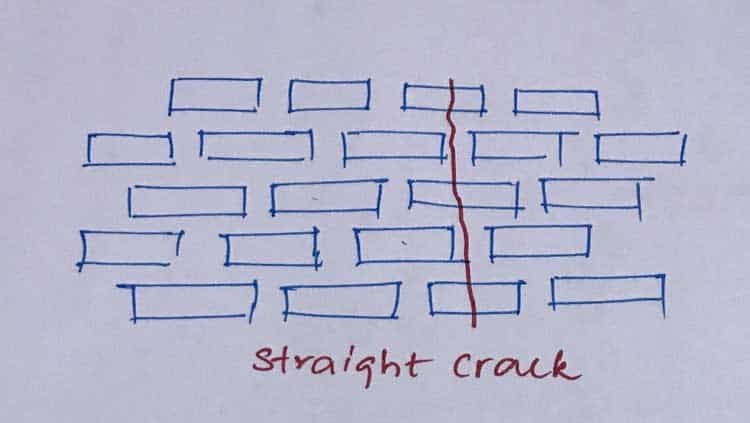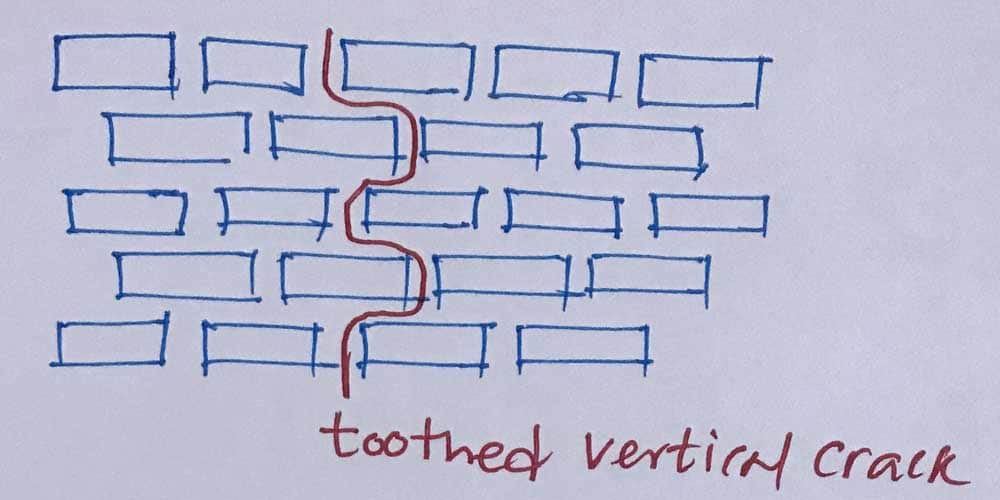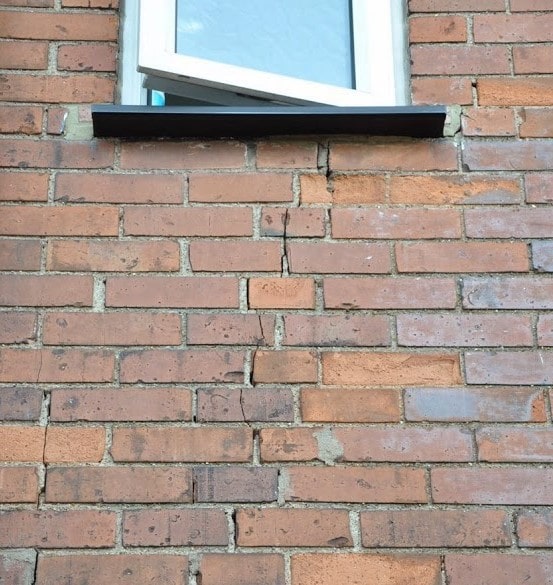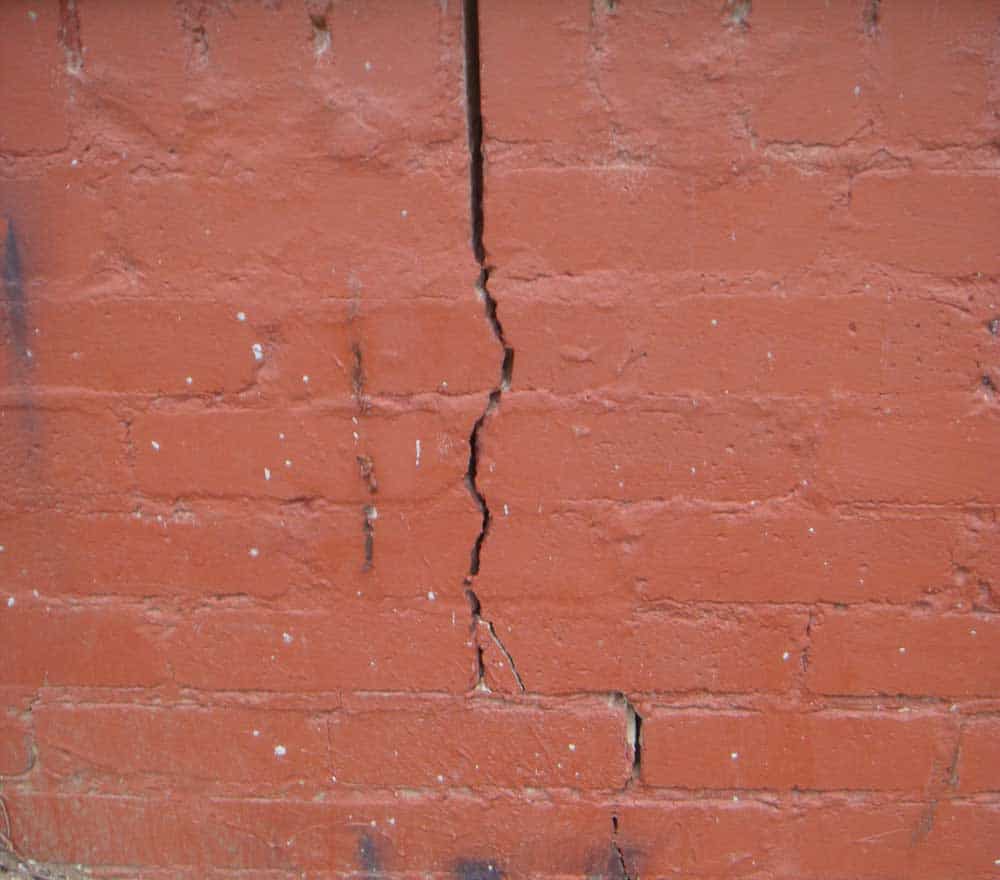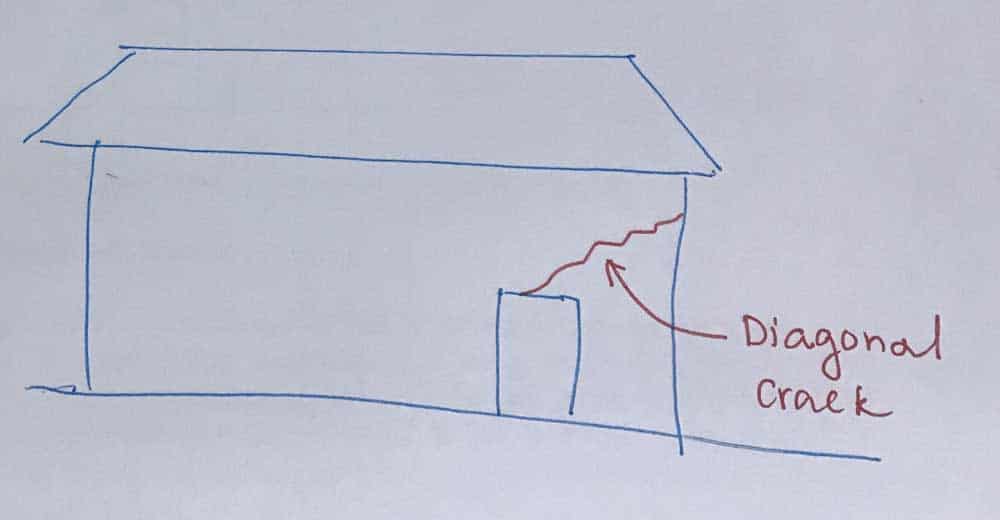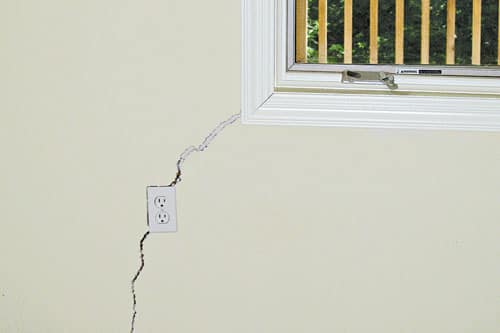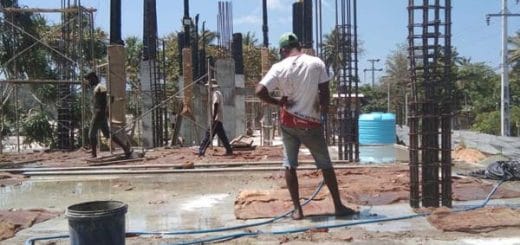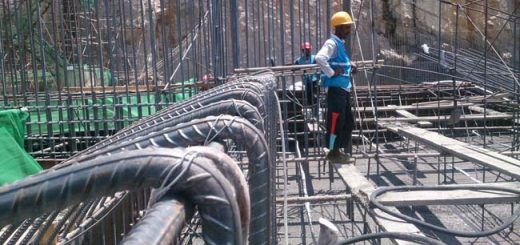Brick Cracks [types and course]
The appearance of brick cracks in masonry walls is very common in any construction where the brick walls are constructed as infill walls or as load-bearing walls.
Since brick walls are not reinforced and weak in tension and shear, they are susceptible to cracking.
Mainly there are three types of brick cracks.
- Vertical Cracks
- Horizontal Cracks
- Diagonal Cracks
These are the major crack types that appear in brick walls.
Let’s discuss each type of brick cracks in detail.
Vertical Cracks in Brick Wall
Depending on the appearance of these cracks can be divided into two categories. They are as follows.
- Straight Cracks
These types of vertical cracks in brick walls form through the wall by cracking bricks too. The following figure indicates the formation of cracks.
- Toothed Vertical Cracks in Brick Wall
These types are also brick cracks that form vertically. This formation could be due to the weaknesses in the motor paste or strong bricks having the capacity more than the mortar.
Causes for Vertical Cracks in Brick Wall
Mainly, there are three main causes that lead to cracks in the masonry walls.
- Temperature Variations
- Foundation Movement
- Moisture Movement in Bricks
Let’s discussed each cause in detail for better understanding.
Temperature Variations Caused Cracks in Brick Walls
Thermal cracks in the walls mostly appear in the masonry walls in the middle of the windows.
Initially, hairline cracks will appear as thermal cracks and they further developed up to 0.3 to 0.5mm.
Further, these types of cracks will reappear even after they rectified if the thermal movement in the wall is not stoped.
Let’s discuss thermal cracks in brick walls are formed.
Formation of Thermal Cracks in Masonry Walls
- When the brick wall exposed to direct sunlight, it expands. These types of expansions are restrained by the cross walls, slabs, foundations, lintel, etc.
- Certain compressive stress in the wall will be developed in the wall due above reason.
- This compressive stress will be higher at the windows as the area of the wall is relatively smaller.
- Masonry walls get shortened due to the creep when it is under the compression.
- The compressed wall expands at night when the temperature of the wall drops and reaches its original state.
- In this process, the tensile stress in the brick wall is developed and the tensile stress will be maximum at the window same as the compressive stress.
- Compression and tension will be developed in the wall daily when it exposed to direct sunlight and cool at night.
- Wall will crack in the process if the tensile stress is greater than the tensile strength of the wall.
Vertical Brick Cracks Due to Foundation Expansion
Let’s briefly discussed these types of cracks.
- Generally, these cracks are wider at the top of the building and it diminished to wared the foundation. At foundation levels, these cracks become hairline cracks.
- There will be a single crack on the two opposite sides of the building.
- Mostly these types of brick cracks appear in the shrinkable clayey soil.
- During the dry season, soil shrink and swell when raions.
- This expansion and contraction in the soil cause cracks in the building.
Vertical Cracks Due to Moisture Movement
- Mainly these type of cracks occurs when the brick absorbs the moisture and expands.
- This expansion causes movement of the wall connected to the particular wall. This movement causes cracks.
- Further, irregular bricks or nonstandards bricks also cause this issue and lead to brick cracks.
Horizontal Cracks in Masonry Walls
The following types of horizontal brick cracks occur in the walls.
- Horizontal Cracks Below the Slab
These types of cracks occur due to thermal effects. Differential stresses caused due to thermal effects crack the brick.
These cracks can be related to the creep of the masonry walls.
- Horizontal Cracks above the Slab
- Horizontal cracks at pitch roofs at every level
Diagonal Cracks in External Walls
- Diagonal Cracks Due to Movement of Soil by Shrinkage
Clayey soils that subjected shrinkage movement causes these types of cracks in the walls.
When these types of soils are dry, their volume reduces and it leads to the settlement of the part of the structure.
Further, drying of the soil towards the mid of the building is minimal as those areas do not expose to the environment. Therefore, shrinkage mostly occurs at the perimeter of the building.
Therefore, these type of brick cracks occurs at the corners of the building.
- Diagonal Cracks due to Heaving of Soil
These type of cracks are also occurring in shrinkable soils.
When it dry, it shrinks extensively. When the water added during the drains, it expands. This expansion lifts the building leading to diagonal cracks in the building.
- Diagonal Cracks at Windows
These cracks form due to the uneven stress distribution in the walls. Uneven stress cause due to the reduction area of the wall at the window. This area carries smaller stress.
Diagonal cracks in the masonry walls are more common on load-bearing walls and these cracks are not that wider and they seem like hairline cracks.
- Diagonal Cracks due to Thermal Expansion
Thermal movement of the wall leads to cracking out the brick walls.
When the internal tensile stresses in the wall greater than the tensile strength of the wall, the wall gets cracked.
These types of cracks could appear in different locations as mentioned below.
- Cracks between the window and the slab.
- Windows and the based or base slab
The article causes for beam failures could also be referred for more information related to beam failures.

